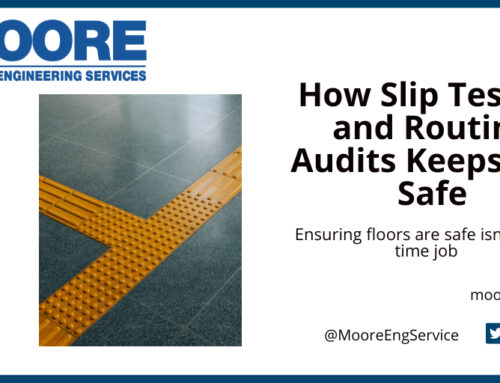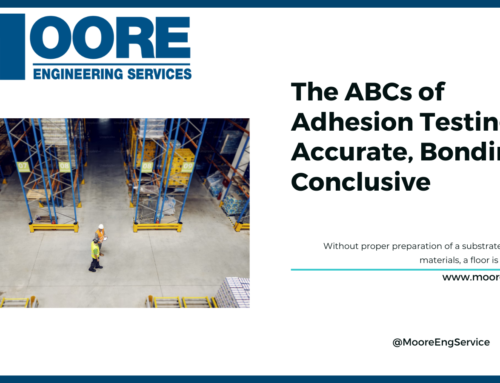Any public establishment is at risk of spills, but importance lies in how the employees rectify those spills. Retail establishments, like common-name department or big box stores, can experience hundreds to thousands of customers daily. These customers may bring in their own beverages or knock over sealed products. Grocery stores selling fresh produce and liquid products pose a heightened risk of spills by customers dropping their items and either not realizing or not notifying an employee.
Reasonably, a spill cannot be expected to be cleaned immediately if there are no employees in the area, but spills are everyone’s responsibility, and routine inspections should be built into the way the company operates. With proper organization and training, all employees and leaders should actively look for spills as they walk around the store. So the question remains: how long is too long for the spill to go?
Training
Different training protocols are implemented for different retailers. Often coming from corporate ownership, this trickles down to the public facing employee level. It is expected that employee onboarding will include training that encompasses multiple areas they will face, and identifying slip and fall hazards should be one of them. Although, because the ownership of each store is different, so will be the level of detail of training and frequency.
What should training encompass? Most commonly, employees are instructed that once a spill is identified, they should stay in the area until another employee can retrieve a caution wet floor sign and cleaning material. Issues arise when employees notice spills but leave them unattended while fetching items to clean. But how will an employee notice a spill in the first place?
Inspections
Incorporating adequate inspections is one of the only ways to ensure that the interior of a store or business remains clean and safe. Hourly sweeps and logging areas checked is a good way to keep track of inspection areas and if any issues are noticed. This also allows the employees to understand if an accident did occur, when was the last time the area was inspected. The Pipe*, a product produced by Guard 1*, offers a means to accurately record regular inspections and is used by over 100,000 organizations.
Services like RiskLimiter Inspection Suite* allows for a technologically advanced way to improve inspections, specifically for slip and fall prevention in supermarkets and the food industry. The integration has a multitude of functions and benefits; inspection data is easy to access, making inspections more thorough and efficient. Along with features for food safety and incident reports, the program allows customizable checklists and analytical tools and reporting all in the effort to address potential risks and hazards before they escalate.
These are just a few examples of automated services that improve inspection quality. With advanced technology so easily accessible, there is really no reason to not have thorough inspection protocols even a fraction similar to RiskLimiter.
Noticing Spills
Having proper training and implementing in depth inspection procedures is a great place to start, but frequency of inspections is the next step to consider. If employees are designated to certain areas of the store, are they instructed to routinely walk their whole area to inspect for any hazards? Are there employees who specifically lap the entire store to look for hazards? Or are employees instructed to look for hazards, but have little training on what to look for with no manager enforcing inspections?
This is why logging and keeping track of when inspections occurred and what the conditions were is so important. Without that organization, it is nearly impossible to know who is responsible for what and what is getting done.
For another example, imagine a mother who is shopping with her two young children in a large wholesale store. The facility does not sell fresh produce or grocery items, but there are refrigerators at the checkout lines. While the mother is busy checking out her items, her children take drinks from the refrigerators, and in the process of drinking spills some of the beverage within the aisle. The mother doesn’t notice, and the children follow her out without saying a word. In a high traffic area with multiple cashiers, how long should we expect a spill to exist?
How Long? As Short as Possible
In this situation, we can assume that an employee would notice the spill within a few minutes, if not immediately. It is the cashier’s area to maintain, and it is common protocol for them to clean while there are no customers or to stand in front of the check lane when not ringing anyone up, which allows for increased capability to identify hazards. A refrigerator being in the area should also indicate a priority to employees for constant inspections. Reasonably, cashier areas should have caution wet floor signs or spill kits readily available. If not, it is strongly encouraged.
Automated inspection systems that keep track of store conditions help ensure areas are maintained, and it comes down to the employee to utilize them. If good operations include hourly sweeps and condition logs, then a spill should only exist for a short period of time measured in minutes, and not hours. The way a company trains its employees is the only way to ensure everyone is on the same page with safety best practices. Sometimes the only way to gain this is through the help of an expert.
Contact Us
Moore Engineering Services has extensive retail experience through our industry expert Daniel Schroeder who provides industry-wide consulting. Consulting with an industry professional to evaluate safety plans and employee training isn’t just a benefit, but a necessity to maintain a safe environment. Don’t hesitate to contact us through the form below or call us at 856-437-7900 for a complimentary consultation regarding retail slip, trip, and fall accidents.
As always, Test Moore, Fail Less.
*Moore Engineering Services is in no way affiliated with RiskLimiter or Guard 1’s The Pipe.






Leave A Comment